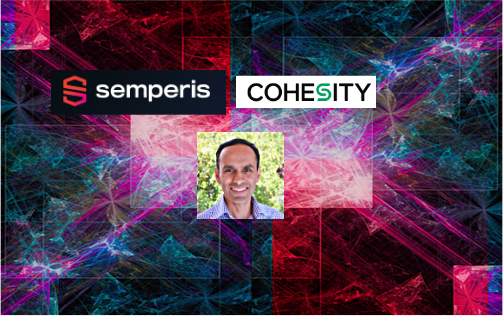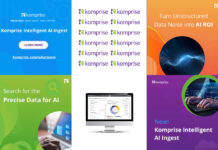Cohesity announced five new cyber-resilience capabilities covering the top 3 public clouds, identity, AI-native data security, data sovereignty and its Gaia AI-based knowledge discovery assistant.
It declares there are five steps needed to boost cyber-resilience; protect all data, ensure data is always recoverable, detect and investigate threats, practice application resilience, and optimize data risk posture.

CEO Sanjay Poonen stated: “Identity is the new battleground, and enterprises need solutions that combine prevention, resilience, and recovery without adding complexity to their existing cyber resilience strategy. Cohesity Identity Resilience delivers a modern, proven approach that helps organizations protect the foundation of their digital operations, so they can recover quickly from even the most critical attacks and remain cyber resilient.”
Cohesity has a library of connectors that it says supports >1,000 datasources. It plans to add 40 additional connectors by the end of 2025, including the most popular compute, container, storage, and database services across AWS, Azure, and Google Cloud.
It is partnering with cyber-security company Semperis, with its automated forest recovery and identity protection tools, to provide Cohesity Identity Resilience protecting Active Directory. This helps users protect and secure on-premises Active Directory and extends these safeguards to Microsoft Entra ID in the cloud. Overall, customers get;
- Proactive Active Directory hardening – The ability to scan on-prem or hybrid Active Directory environments for hundreds of indicators of exposure (IOEs), see risk scores, apply remediation guidance, and identify and prioritize attack paths that bad actors could use to reach critical privileged assets (Tier 0).
- Secure, immutable backups with capability for cyber vaulting – Enables consistent backup and recovery workflows while providing isolation of AD backups.
- Rapid and secure recovery – Restores Active Directory forests after a cyberattack or catastrophic failure, ensuring minimal downtime.
- Specialized identity forensics and incident response capabilities – Cleanses the system of attacker artifacts, ensuring Active Directory is restored to a trusted environment.
- Comprehensive post-breach analysis – Offers comprehensive post-attack forensic support, including rapid assessments within defined incident windows, and validation of Active Directory integrity before restoring production systems.
A new NetBackup DirectIO feature enables NetBackup to write backups to the Cohesity Data Cloud target. All NetBackup data sources can have their backups stored in Cohesity’s environment to get faster restoration and, Cohesity says, up to 53 percent in direct cost and storage efficiency savings.
Cohesity is now able to provide an on-premises installation of its FortKnox cloud-based vault called the FortKnox Self-managed option. It enables customers with data sovereignty requirements to implement an isolated, secure virtual air-gapped vault within their own data centers.
It is adding NetBackup’s “ultra-fast, hash-based threat scanning” to its DataProtect product to deliver “near-instant search results for indicators of compromise” across customers’ data. Cohesity will also incorporate Google Threat Intelligence into Cohesity Data Cloud’s threat scanning capability, at no extra cost, as part of its Cohesity Enterprise edition.
As a way of practising app resilience, Cohesity is introducing a cyber recovery orchestration tool, RecoveryAgent. This automates recovery testing, rehearsals, and recovery execution. It has embedded malware scanning and agentic AI capabilities. By using RecoveryAgent, customers can organize recovery workflows and forecast recovery timelines with some precision.
An integration with Cyera embeds additional data classification and governance capabilities directly into the Cohesity Data Cloud platform. It will enable customers to identify sensitive and regulated data within backups, eliminate redundant or obsolete data, and enforce compliance requirements in near real-time to avoid risks like sensitive data restoration to unauthorized locations.
The AI-driven Gaia assistant, available for both cloud and on-prem environments, gets a new search interface, sensitive data redaction, multi-language support, and integrations with Slack and Google Agentspace.
Lastly Cohesity is expanding its CERT (Cyber Event Response Team) offerings with new cyber resilience consulting services.
Download its 5-step cyber-resilience eBook here. Visit the Catalyst1 website for session replays and on-demand content.
Bootnotes
Protecting data everywhere includes mainframe data by definition. Cohesity protects mainframe data through integrations with partners like Model9 and Luminex, enabling backup, archiving, disaster recovery, and ransomware protection for mainframe environments (such as IBM z/OS).
An Active Directory forest is is the top-level structure that represents a collection of one or more domains – groups of objects (users, computers, etc.) – that share a common schema, configuration, and global catalog, forming a single security and administrative boundary. Domains in a forest can be organized hierarchically into trees.








